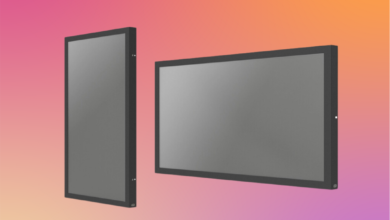Electric Marking Machine: Revolutionizing Industrial Marking Solutions

Introduction
In the modern industrial world, precision, durability, and efficiency are key to successful operations. The need for clear, accurate, and permanent markings on a variety of materials has become essential in industries ranging from automotive to aerospace, medical devices to manufacturing. The electric marking machine stands at the forefront of industrial marking technologies, offering an innovative solution that addresses these demands effectively. This article explores the functions, advantages, applications, and factors to consider when selecting an electric marking machine for your business.
What is an Electric Marking Machine?
An electric marking machine is a tool used to create permanent, high-quality marks on different types of surfaces. The machine uses a high-frequency electric pulse or impact mechanism to inscribe serial numbers, logos, text, barcodes, QR codes, and other designs onto materials. It is especially valued for its precision and ability to mark hard and durable materials such as metals, plastics, ceramics, and composites.
Unlike traditional marking methods, such as ink-based or mechanical engraving systems, an electric marking machine uses electromagnetic or electric motor-driven mechanisms to generate the force required for marking. This allows for the creation of consistent, indelible marks with high precision, ideal for a range of industrial applications.
See also: AI Face Swap Technology in Music Album Cover Design
How Does an Electric Marking Machine Work?
The electric marking machine operates through a combination of electrical and mechanical systems to achieve its marking objectives. The process involves several stages:
1. Electric Stylus
This component is responsible for making contact with the material and creating the markings. The stylus is powered by an electric motor or electromagnetic force, which controls its movement and the intensity of impact.
2. Control Mechanism
Electric marking machines come equipped with control systems that guide the movement of the stylus. These systems may feature simple manual controls or advanced software interfaces. The software often allows users to design or import marking patterns, adjust settings like speed, depth, and pressure, and set the alignment and orientation of the workpieces.
3. Marking Process
Once the workpiece is in place, the electric marking machine begins the process.The depth, speed, and spacing of these impacts can be adjusted depending on the material and the marking’s requirements.
4. Material Compatibility
Their ability to adapt to different materials makes them a valuable tool in industries where parts are made from various substances.
5. Power Supply
These machines typically run on electricity, which powers the internal electric motor or electromagnetic system. The use of electricity ensures a consistent, high-powered marking process, making the machines reliable for industrial-grade applications.
Benefits of Using Electric Marking Machines
Electric marking machines offer several key benefits that make them a preferred choice for industries looking for high-quality, permanent marking solutions:
1. Durability
The markings created by electric marking machines are highly durable. The marks are etched deeply into the material, ensuring that they resist wear, corrosion, and abrasion. This is particularly important in industries like automotive and aerospace, where parts are subjected to harsh environmental conditions.
2. Precision
Electric marking machines provide exceptional precision, capable of creating fine, intricate marks with tight tolerances. This makes them ideal for industries that require high accuracy, such as the medical device industry, where traceability and part identification are critical.
3. Speed and Efficiency
These machines can mark a large number of parts in a short amount of time, enhancing production efficiency. This is particularly beneficial in mass production environments, where quick turnaround times are essential.
4. Cost-Effectiveness
Unlike laser systems or ink-based marking solutions, electric marking machines don’t require consumables like ink, gas, or specialized foils. This significantly reduces the long-term operational costs, making them a cost-effective solution for many industries.
5. Flexibility
Electric marking machines can mark a variety of materials, ranging from metals to plastics. Additionally, they can be used for a wide range of marking types, such as alphanumeric characters, logos, serial numbers, and barcodes, providing excellent flexibility to manufacturers.
Conclusion
The electric marking machine is an indispensable tool in modern industrial settings, offering a precise, durable, and cost-effective solution for permanent marking. Its ability to mark a variety of materials, high-speed operation, and low maintenance make it ideal for industries ranging from automotive to aerospace and medical device manufacturing.
By choosing the right electric marking machine, industries can significantly improve product traceability, reduce operational costs, and ensure the durability of marks that are critical for compliance and safety. As technology advances, electric marking machines will continue to evolve, providing even more efficient solutions for industrial marking.





